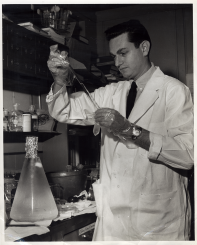 ” The UK Medical Heritage Library now available online for free – 10 May 2017
” The UK Medical Heritage Library now available online for free – 10 May 2017
A £1m project to digitise more than 15 million pages of 19th century medical texts has been completed and the material is now available online for free. It has taken three years to convert these historic published works for use in the 21st century by learners, teachers and researchers.
Covering much more than just medical sciences, this enormous library of text and images encompasses consumer health, sport and fitness, diet and nutrition, along with some weird and wonderful historical medical practices such as phrenology and hydrotherapy.
The project was jointly funded by education technology solutions not-for-profit, Jisc, and Wellcome Library, which contributed its entire 19th century collection, along with content from nine partner institutions: Royal College of Physicians of London, Royal College of Physicians of Edinburgh, Royal College of Surgeons of England, University College London, University of Leeds, University of Glasgow, London School of Hygiene and Tropical Medicine, King’s College London and the University of Bristol. As a collective, this will make a valuable resource for the exploration of medical humanities.
The aim has been to create a comprehensive online resource for the history of medicine and related sciences, which significantly increases the availability of digitised text for teaching, learning and research.
The collection, called the UK Medical Heritage Library, is completely open and can now be accessed for free via Jisc’s Historical Texts resource or via the Wellcome Library’s website.
Brought to you by Scope e-Knowledge Center, a world-leading provider of Abstracting & Indexing (A&I) Services, Knowledge Modeling Services (Taxonomies, Thesauri and Ontologies), Metadata Enrichment & Entity Extraction Services.”
Source: Knowledgespeak Newsletter




 PubMed was first released two decades ago in January 1996 as an experimental database under the National Center for Biotechnology Information (NCBI) retrieval system. The word “experimental” was dropped from the website in April 1997, and on June 26, 1997, a Capitol Hill press conference officially announced
PubMed was first released two decades ago in January 1996 as an experimental database under the National Center for Biotechnology Information (NCBI) retrieval system. The word “experimental” was dropped from the website in April 1997, and on June 26, 1997, a Capitol Hill press conference officially announced 


You must be logged in to post a comment.